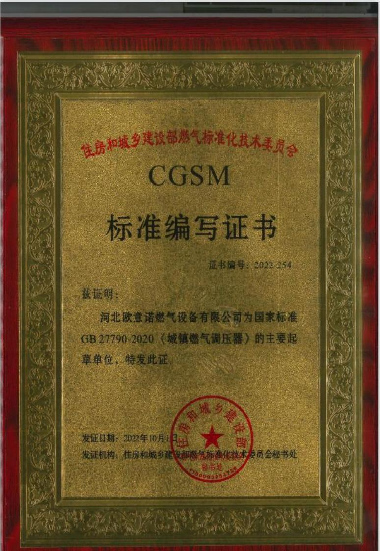
Nov . 19, 2024 11:31
Back to list
Understanding the Functionality and Benefits of Pressure Reducing Regulators in Various Applications
Understanding Pressure Reducing Regulators
Pressure reducing regulators (PRRs) play a vital role in numerous industrial applications and everyday settings, ensuring the safe and efficient management of gases and fluids. These devices are critical in controlling and maintaining pressure levels within specified limits, providing a consistent outlet pressure regardless of fluctuating inlet pressure or varying flow demands.
At its core, a pressure reducing regulator is designed to lower the high input pressure of a gas or fluid to a more manageable level. This process not only protects downstream equipment from potential damage caused by excessive pressure but also optimizes performance in various applications such as gas distribution systems, welding operations, and hydraulic systems.
The functionality of PRRs hinges on their construction and the principles they employ. Typically, a PRR consists of a body, a diaphragm, an adjusting mechanism, and a spring. As fluid or gas enters the regulator, it exerts pressure on the diaphragm. When the inlet pressure surpasses the desired outlet pressure, the diaphragm moves, compressing the spring and closing the valve to reduce the flow. Conversely, if the outlet pressure drops, the spring expands, allowing more flow through the valve. This dynamic process ensures that the desired pressure is maintained continuously.
pressure reducing regulators

One of the key benefits of using a pressure reducing regulator is enhanced safety. In many applications, such as residential gas supply, high-pressure gas lines pose significant risks. By utilizing a PRR, potential hazards can be mitigated through precise control over the pressure delivered to appliances and devices. This regulation not only prevents leaks and failures but also enables compliance with safety standards.
Moreover, PRRs contribute to energy efficiency. By maintaining optimal pressure levels, they minimize the energy waste associated with high-pressure systems. In industrial settings, this translates to lower operational costs and reduced environmental impact. The proper use of regulators can lead to significant energy savings, making them a cost-effective solution for businesses aiming to enhance their sustainability practices.
In addition to safety and efficiency, pressure reducing regulators are versatile and can be tailored for various applications
. From domestic use in natural gas systems to heavy-duty applications in manufacturing and pharmaceuticals, these regulators come in different sizes and specifications to meet specific requirements.In conclusion, pressure reducing regulators are indispensable devices that enhance safety, efficiency, and versatility in managing gas and fluid pressure. As industries continue to seek safer and more cost-effective solutions, the importance of PRRs will only increase. Understanding their operation and application is crucial for anyone involved in sectors where pressure management is paramount. Whether for industrial use or residential applications, investing in quality pressure reducing regulators is a step towards ensuring reliable and safe operations.
Latest news
-
Safety Valve Spring-Loaded Design Overpressure ProtectionNewsJul.25,2025
-
Precision Voltage Regulator AC5 Accuracy Grade PerformanceNewsJul.25,2025
-
Natural Gas Pressure Regulating Skid Industrial Pipeline ApplicationsNewsJul.25,2025
-
Natural Gas Filter Stainless Steel Mesh Element DesignNewsJul.25,2025
-
Gas Pressure Regulator Valve Direct-Acting Spring-Loaded DesignNewsJul.25,2025
-
Decompression Equipment Multi-Stage Heat Exchange System DesignNewsJul.25,2025

